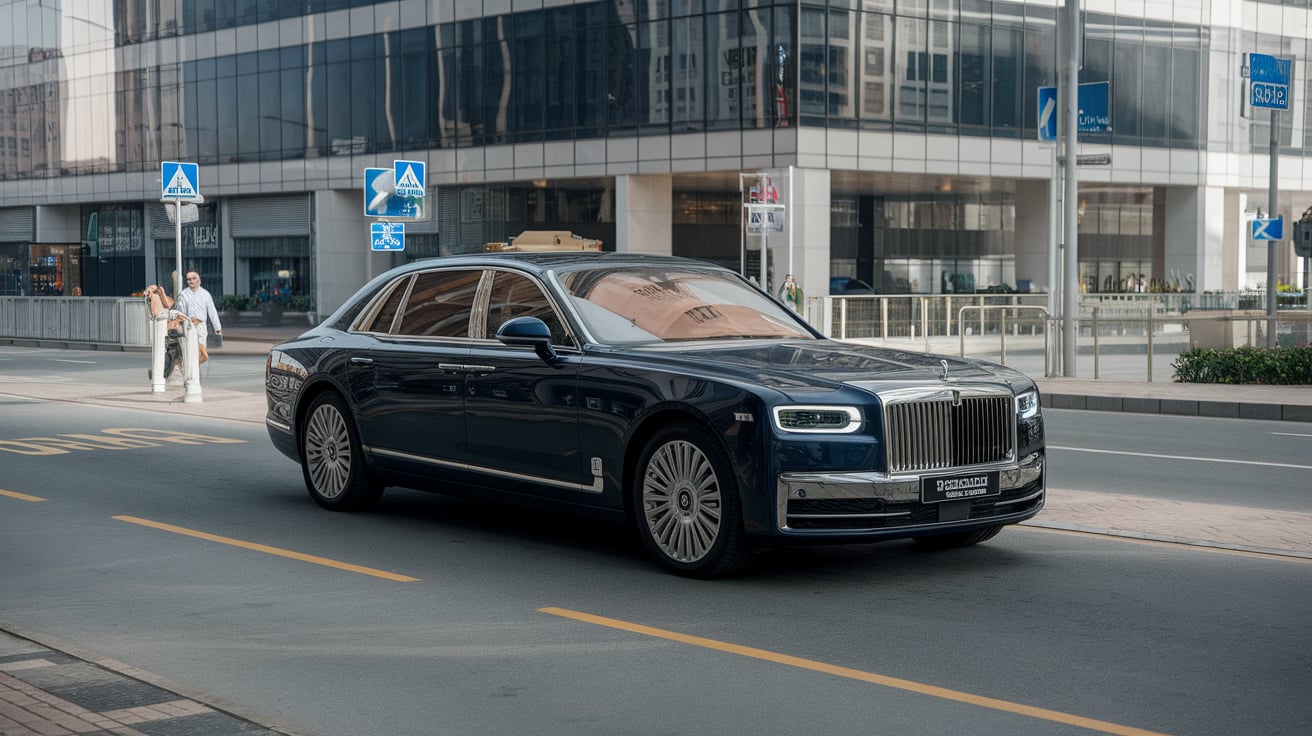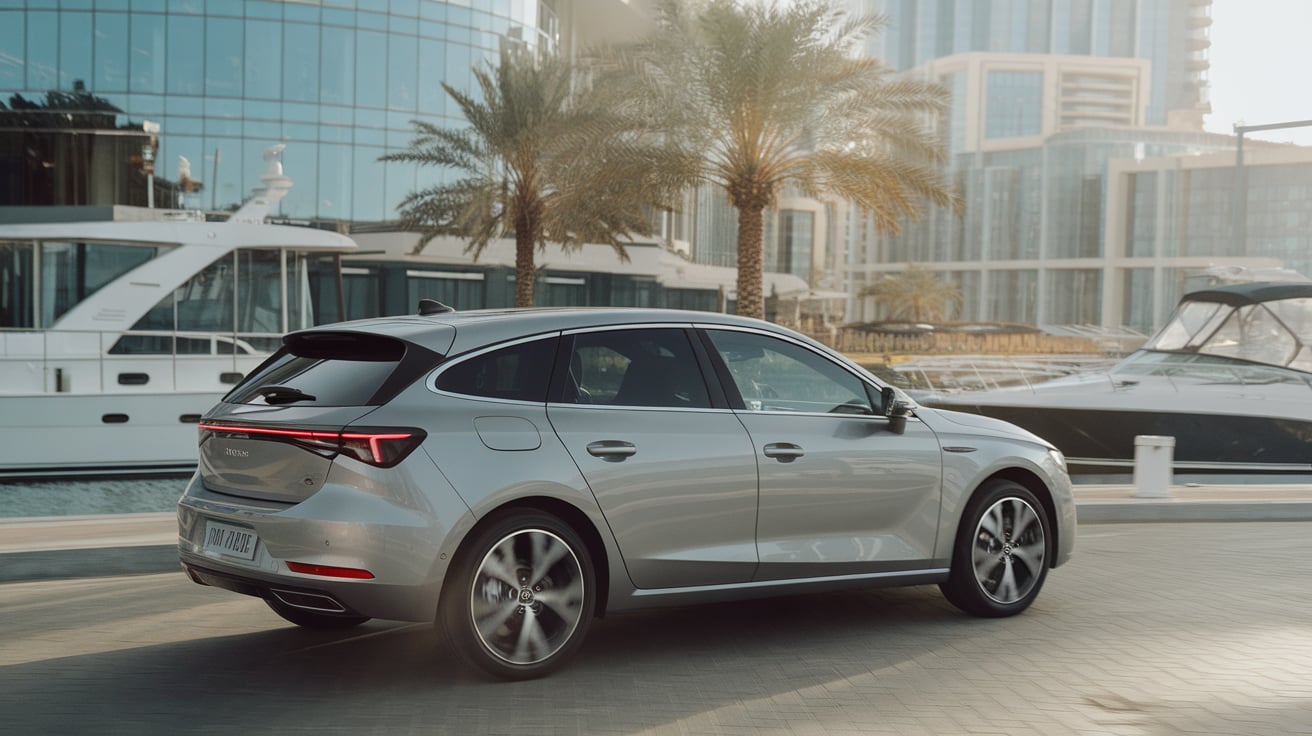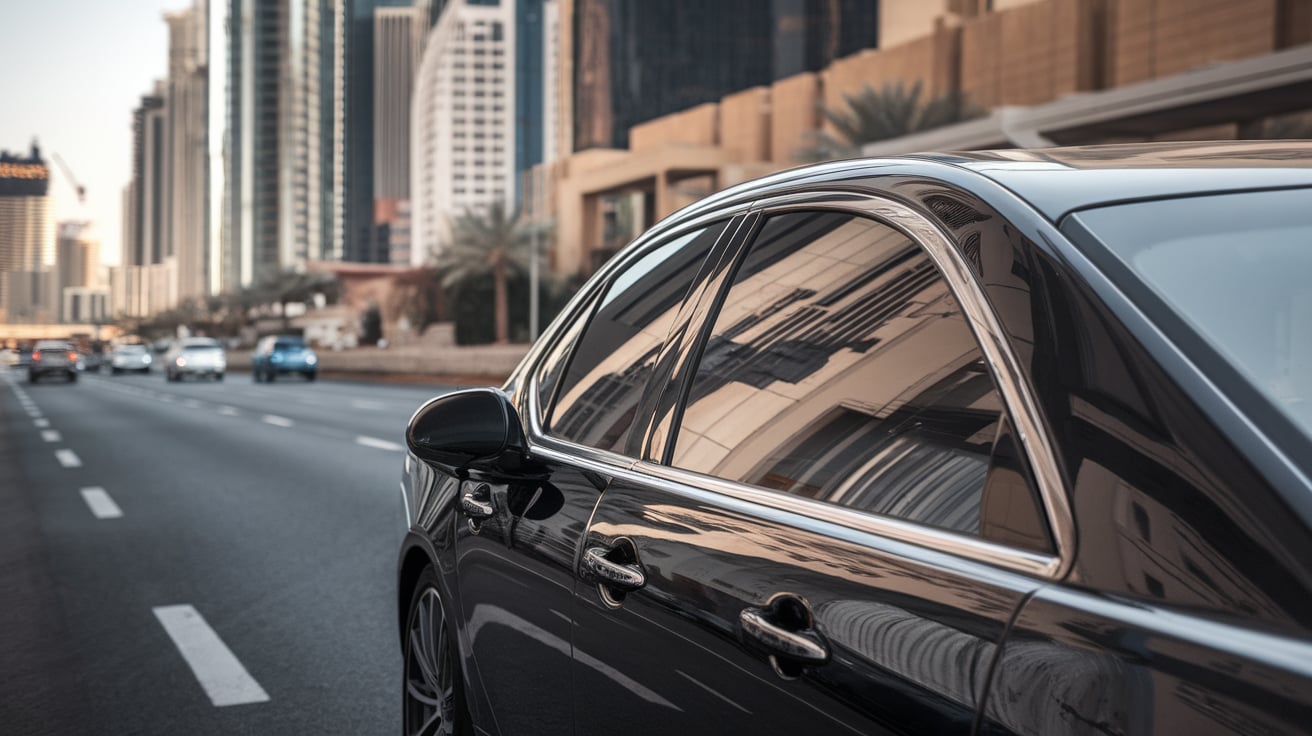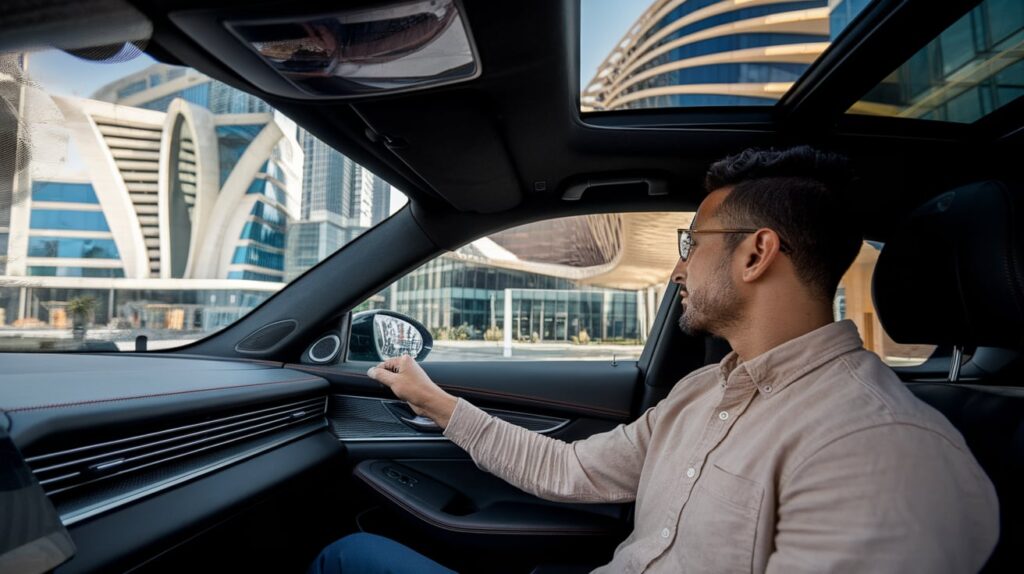Why does car tint bubbling happen so often in Dubai, even when you think you chose a “good” film? It is not just bad luck, it is often heat, humidity, and rushed installation. With road temps touching 60°C, low-grade adhesives start breaking down fast, especially on the rear windshield. Add trapped dust or poor curing, and you get those raised pockets that ruin visibility and heat rejection. In this blog, we break down what causes tint to bubble, how Dubai weather affects window tint, and what you can do to avoid costly rework. Whether it is cheap tint film, installation mistakes, or thermal stress, this is where the truth shows up, clearly.
What Causes Car Tint to Bubble?
What causes car tint bubbling is not guesswork, it is a chain reaction of specific installation flaws and environmental stress, especially under Dubai’s brutal heat. If your tint looks flawless on day one and starts bubbling by week two, something critical went wrong beneath the surface. Let’s break down the real causes:
- Improper adhesive activation
Most high-performance window films use heat-sensitive adhesives. If the installer skips proper activation, either by underheating or overheating, the bonding weakens. This is common with ceramic tint films if applied without calibrated heat guns. - Contaminated glass surface
Even microscopic dust, wax residue, or cleaning chemical layers can prevent full adhesion. In Dubai, where sand particles linger everywhere, a single misstep in cleaning leads to car tint bubbling after just a few hot days. - High humidity during application
Applying tint in a non-climate-controlled space traps moisture. In 50°C outdoor heat, this moisture vaporizes and expands under the film, creating blisters and lift marks. This is a common issue in garages that lack air filtration or dehumidifiers. - Incorrect slip solution mix
Installers use a water-based slip solution to position the film. If that mix has too much soap or too little water, it interferes with adhesive curing. That weak bond allows air and moisture pockets to form and expand over time. - Using non-heat-resistant tint films
Standard dyed films are not designed to handle Dubai’s high infrared (IR) load. Their adhesives break down faster, especially on rear windshields with defroster lines, resulting in large bubbles and edge lift.
Each of these factors alone can lead to bubbling. Stack them together? Your tint might not last a month. In a city like Dubai, where car window tinting is more about heat protection than looks, installation precision matters more than price. The right tint film, wrong installer and you still lose.

Conditions That Worsen Tint Bubbling
In Dubai, even the best tint job can fail if the environment turns against it. The heat, sun, and sand do not just wear out tires, they attack your window film too. And if your film was not made to handle that kind of abuse, car tint bubbling shows up fast. Here are the specific conditions that make bubbling worse:
- Extreme surface heat from parked cars in direct sunlight
- Thermal expansion and contraction due to sudden cooling from AC
- Intense UV radiation breaking down film adhesives
- Dust and sand contamination during or after installation
- Humidity or moisture exposure before the adhesive cures
- Rear defroster lines that heat unevenly and lift the film
- Low-quality tint films not rated for high infrared load
When you mix cheap material with harsh Dubai conditions, bubbling is not just likely, it is expected. Knowing what worsens it helps you avoid repeat jobs, wasted money, and daily frustration on every drive.
Low-Grade Tint Films That Fail in Dubai Conditions
If your car tint started bubbling within weeks or faded to purple after one summer, the film itself is likely the problem. Cheap tint may look acceptable at first, but it is not designed for Dubai’s high heat load or UV exposure and that shows up fast. Here’s what specifically goes wrong with low-quality tint films:
- Adhesive failure above 60°C
Many budget films use pressure-sensitive adhesives not rated for extreme temperatures. Once your car glass heats up past 60°C (common in Dubai), the adhesive begins to soften and separate, forming bubbles and edge lift. - No infrared rejection layer
Films without IR-blocking nanoceramic or metalized layers allow more heat to pass through. This not only heats your cabin but also accelerates adhesive breakdown behind the film. - Dyed-only film construction
Dyed tints, often the cheapest on the market, fade rapidly under UV light. Within months, they lose color, clarity, and structural integrity. The result? You get surface cracking and internal bubbling, especially on sun-facing side windows. - No compatibility with rear defroster lines
Films not engineered for electrical contact points will bubble or lift where they overlap defroster wires. Rear windshields are usually the first place this failure shows up. - Thin film layers with weak laminate bonding
Single-ply or 1.5-mil films separate when exposed to expansion and contraction cycles. Without strong laminate bonding, even basic weathering causes surface distortion and microbubbles.
Going cheap with tint might save you 200–300 AED upfront, but in Dubai’s environment, you will be peeling it off within six months. Only high-quality films with UV stabilizers, IR protection and heat-rated adhesives hold up long-term in this market. Anything else is a gamble you will likely lose.
We provide premium car tinting services in Dubai, ensuring your vehicle gets lasting protection, comfort, and clarity. Book your Car Tinting Service today and enjoy superior results that stand up to Dubai’s heat.

Installation Errors That Lead to Bubbles
If you’re noticing car tint bubbling just days after getting it done, chances are it has nothing to do with the film itself, it is the way it was installed. In Dubai, where heat, dust, and UV levels are unforgiving, even minor mistakes during application can quickly turn into visible, costly issues. Here are the specific errors that often cause bubbling:
- Unclean or contaminated glass surface
A single grain of dust or leftover cleaning chemical can prevent proper adhesive bonding. In Dubai’s dusty air, failing to clean and clay-bar the glass leads to tint film lifting within days. - Improper soap-to-water ratio in slip solution
The slip solution helps position the tint during installation. If the mixture has too much soap, it interferes with adhesive curing. Too little? The film sticks too fast and traps air. Both lead to car window tint bubbles as it dries. - Uneven or rushed squeegee pressure
Bubbles often form when air or water pockets are not pushed out completely. This happens when the installer uses fast or uneven strokes, skips edge passes, or uses the wrong angle of pressure. - Incorrect heat application
Heat shrinking is critical, especially for curved rear glass. If done improperly or not at all, the film will resist the curve, leading to buckling and tint bubbling along the glass contours. - Exposure to high heat or AC too soon
Tint needs 2–4 days to fully cure. If the car is parked in full sun or blasted with strong AC right after installation, the adhesive can shift or lift before setting, especially on the rear windshield.
Installation technique is just as important as film quality. In Dubai, where thermal expansion, humidity and airborne particles are part of daily life, small shortcuts during installation turn into full-blown problems fast. A proper job requires more than skill, it requires understanding how tint behaves under pressure, heat and time.
How to Tell if Tint Bubbles Are Temporary or Permanent
Not every case of car tint bubbling means your film has failed. In many situations, especially just after installation, what looks like a problem is simply part of the curing process. But in Dubai’s extreme heat, knowing whether those bubbles are temporary moisture pockets or permanent adhesive failures is critical. Here’s how to tell the difference before it spreads or worsens.
When Tint Bubbles Are Temporary
If your car was just tinted within the last few days and you’re spotting small, soft bubbles, don’t panic yet. These are usually air or moisture bubbles trapped during installation and should clear up on their own as the tint film cures.
Temporary tint bubbles are common when:
- The film was installed within the last 48 to 72 hours
- Bubbles are small, round, and appear across flat surfaces
- They feel soft or squishy when pressed lightly
- The tint was applied in cooler weather or high humidity
- They begin shrinking as the adhesive finishes bonding
In most cases, especially with ceramic tint or multi-layer films, a short curing phase is expected. Heat from the sun during the day actually helps speed up drying, unless the car is exposed too soon to extreme heat or AC blasts.
When Tint Bubbles Are Permanent
If bubbles remain for more than a few days or start to grow, it usually points to adhesive breakdown, installation error, or poor-quality tint film. Dubai’s intense UV rays and glass temperatures reaching over 70°C make these issues worse and more visible.
Permanent tint bubbles are often caused by:
- Bubbles showing no change after 5 to 7 days
- Large, uneven, or spreading bubbles, especially near corners
- Firm texture, bubbles feel hard or make a crackling noise
- Located near film edges, rear defroster lines, or door seals
- Caused by dust contamination, incorrect slip solution, or overstretched film
These bubbles will not flatten out. They’re the result of film delamination, where the adhesive layer separates from the glass or the film layers split internally. This typically happens when low-cost dyed films or poorly rated adhesives are used products not designed to handle Dubai’s infrared load or UV index.
Knowing when bubbles are harmless versus when they mean rework can save you hundreds of dirhams and hours of back-and-forth with installers. If bubbles last longer than a week or grow in size, it’s best to have the tint professionally inspected and, if needed, replaced with a film rated for high heat, UV resistance, and IR rejection, all crucial for cars in the UAE.
For a deeper dive into how UV tint protects your car’s interior and improves long-term durability, check out our detailed guide on UV Tint in Dubai. It explains why the right tint isn’t just about looks, but about real protection in extreme conditions.

How to Fix Car Tint Bubbles Without Making It Worse
You see those raised spots forming on your window? If the car tint bubbles are small and recent, there’s a chance you can fix them but only if you know what you’re doing. In Dubai, where window film failures often happen due to heat, improper curing, or weak adhesive, the fix depends entirely on how deep the damage goes.
When DIY Might Work (Temporary Bubbles Only)
If your tint is less than a week old and the bubbles feel soft, they’re likely moisture or air pockets. These often disappear during the curing phase. But if they’re hanging around too long, here’s what you can try:
- Park the car in the sun for 2–3 hours
Heat helps cure the adhesive and shrink moisture bubbles, especially with high-quality ceramic or carbon films. - Use a heat gun + hard card method
Lightly heat the area (not more than 90°C) while pressing out the bubble with a plastic squeegee or hard card wrapped in microfiber. Always push toward the nearest edge. - Pin-prick method (for stubborn air bubbles)
Use a fine sewing needle to make a tiny hole, then press the air out gently. This method works only on non-metallic, single-layer films and should not be attempted on dyed tints, as it can tear or discolor.
Note: If your film was installed professionally, always check whether the bubbles are still within the curing period before trying any DIY method.
When DIY Fails & Reinstallation Is the Only Option
If the bubbles are firm, spreading, or have appeared months after installation, they’re not coming out with a heat gun or pin. You’re dealing with permanent tint bubbling, usually caused by:
- Adhesive delamination
- Cheap film not rated for Dubai’s climate
- Edge lift from poor squeegee technique or glass prep
- Rear defroster line distortion
At this point, the only reliable fix is full removal and reinstallation. Trying to “spot-fix” a failing tint often causes more damage, especially on rear windshields, where defroster lines make removal trickier.
If you’re unsure whether the bubbles are temporary or permanent, it is always safer to get a second opinion. A quick tint inspection can save you from a full redo or wasted time on DIY fixes. Book a quick check with a local tinting expert, no pressure, just clarity.
Done Dealing with Bubbles? Do It Right This Time.
If your tint keeps bubbling, peeling, or fading, especially after just a few months, it’s time to stop patching and start fresh. A proper tint job in Dubai’s heat is not just about film quality; it is about professional installation and a real warranty that covers what matters. Before you reapply anything, ask yourself:
- Did your last installer give you written warranty terms?
- Was the film rated for 70°C+ surface temperatures?
- Did they apply it indoors with proper curing time?
If the answer is no or you are not sure, it is worth getting it checked before you waste more time or money. A 10-minute inspection can save you from doing it all over again. Choose a film that is made for Dubai’s climate. And more importantly, let someone install it who actually knows how to make it last.
Avoid costly mistakes with the wrong tint choice. Check out our 3M Color Stable Series for proven protection and style before booking your Car Tinting in Dubai.

What Tint Bubbles Really Tell You
Car tint bubbling in Dubai is not just a cosmetic issue, it’s the glass telling you the install was rushed, the film was weak, or the environment wasn’t right. We’ve broken down the real causes, from poor slip solutions to unclean glass, and shown how the heat, humidity, and UV levels in this city push bad tint jobs to their limit.
Temporary bubbles might disappear. Permanent ones only get worse. And the fix? It is never about patching. It is about doing it right the next time, with the right material and the right hands.
So if you’ve already been through one failed tint, let that be the last. Take what you’ve learned here and apply it. Not just to avoid bubbles but to make the whole tint last longer, look better, and perform like it should.
FAQs | Car Tint Bubbling in Dubai
- How long do tint bubbles take to go away after installation?
If they’re caused by trapped moisture or air during installation, they usually fade within 3 to 5 days, especially in warm climates like Dubai. But if they stay the same or grow after a week, it’s likely an adhesive issue. - Can Dubai’s heat really cause car tint to bubble?
Yes. When glass surfaces hit 70°C or more, cheap tint adhesives start breaking down. Combined with poor installation or low-grade film, car tint bubbling becomes unavoidable in this climate. - Should I pop the bubbles myself?
No. Puncturing the film can lead to tearing, peeling, or discoloration. DIY fixes rarely last and often void any warranty. It’s better to get a professional tint inspection before doing anything. - Can a professional fix tint bubbles without replacing the whole film?
Only if the bubbles are small, recent, and caused by moisture. In most cases involving adhesive failure or edge lift, the film will need to be removed and reinstalled. - What type of tint is best for preventing bubbling in Dubai?
Look for ceramic or nano-ceramic window tint with strong IR and UV rejection. Avoid dyed or metallic films that are not rated for high heat. Also, always check that it’s installed in a controlled indoor environment.

